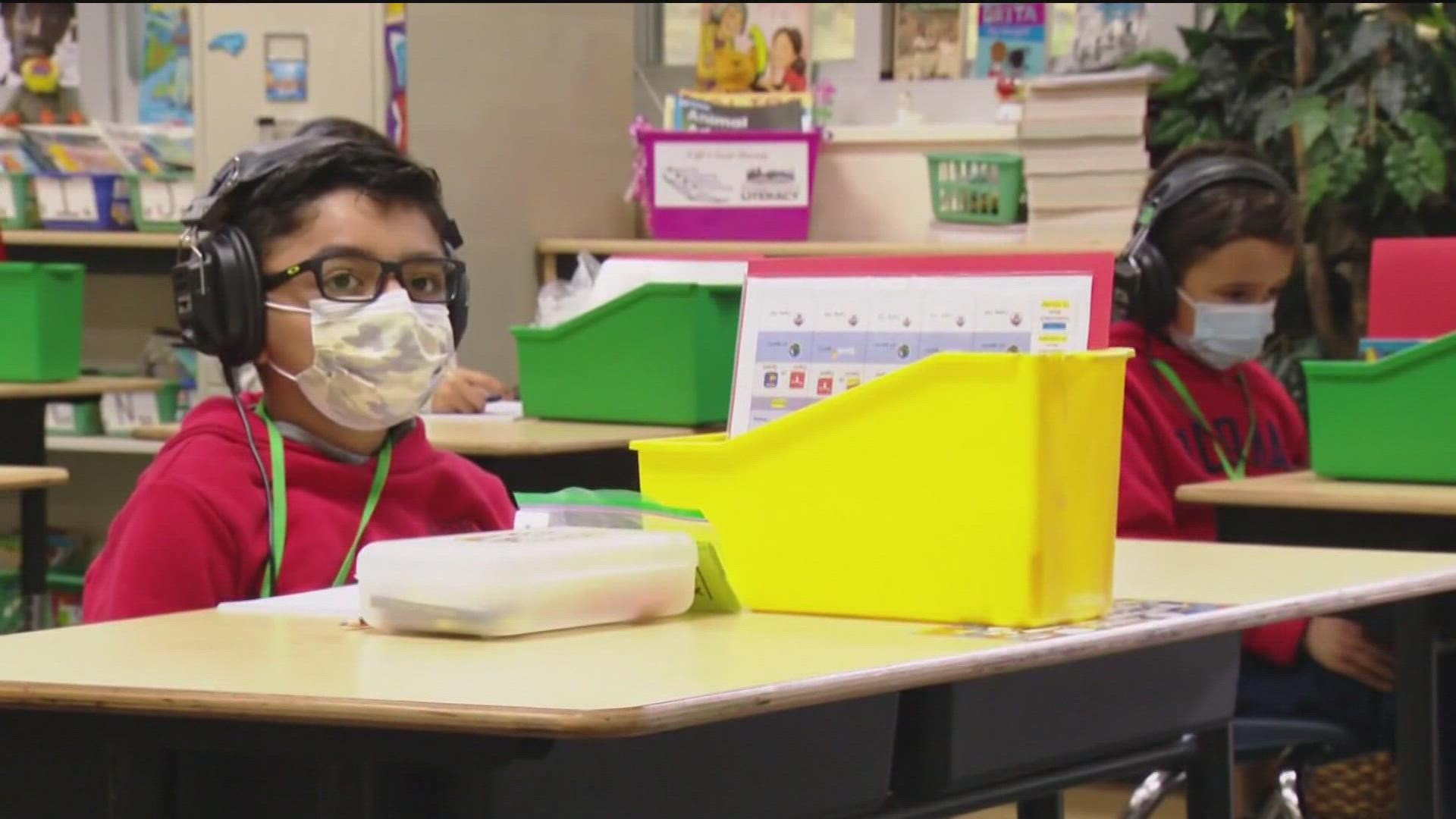SAN DIEGO COUNTY, Calif. — San Diego County public health officials reported 325 new COVID-19 cases and five additional deaths from the illness, raising the county's cumulative totals to 39,446 cases and 700 deaths.
Five men died between Aug. 1 and 31, and their ages ranged from mid- 40s to early 90s. All had underlying medical conditions.
Of 9,031 tests reported Thursday, 4% were positive, maintaining the county's 14-day rolling positive testing rate at 3.8%, well below the state's 8% guideline. The seven-day average number of tests performed in the county is 7,190.
Of the total positive cases in the county, 3,169 -- or 8% -- have required hospitalization since the pandemic began, and 767 -- or 1.9% -- were admitted to an intensive care unit.
County health officials reported two new community outbreaks Thursday, bringing the number of outbreaks in the past week to 17. The outbreaks were in a business and a restaurant/bar setting.
The number of community outbreaks remains well above the county's goal of fewer than seven in a seven-day span. A community setting outbreak is defined as three or more COVID-19 cases in a setting and in people of different households in the past 14 days.
San Diego State University reported Wednesday it has recorded 64 student COVID-19 infections since the semester began last week, leading the university to immediately move all in-person classes to an online format for the next four weeks.
While the majority of those are unrelated cases, a few are related to "off-campus, non-educational" activities, said Dr. Eric McDonald, the county's director of epidemiology. Close contacts of all the students, including roommates and family members, have been notified.
"This is expected," McDonald said Wednesday of students from many different backgrounds coming together in one place. "We do expect more cases. There have been no hospitalizations yet, but the vast majority have had symptoms. Young people are less likely to suffer symptoms, but this is not the cold or flu. This is a very serious illness."
Dr. J Luke Wood, SDSU's vice president for student affairs and campus diversity, said all 200 in-person classes -- mostly lab work classes -- would move online, and all students who have moved into campus housing would be able to move out if they so choose.
"Our students are welcome to stay," he said Wednesday. "And students who wish to move out can do so. However, if at any point they return, they will be placed under quarantine for two weeks."
SDSU has more than 130 spaces for students to safely quarantine, according to the university. Students can contact the Office of Housing Administration to discuss leaving campus housing.
Additionally, all on-campus SDSU athletics training and workouts were be placed on a two-week pause starting Thursday due to COVID-19.
San Diego County Supervisor Nathan Fletcher cautioned residents to take the illness seriously over the coming holiday weekend and to avoid house parties and other large gatherings.
"One of the most dangerous settings is an indoor setting," he said. "The actions we take moving forward will impact our trajectory going forward."
San Diego County schools were allowed to reopen for in-person teaching starting Tuesday.
Tuesday marked two weeks since San Diego County was removed from the state's COVID-19 watch list and marked nearly three weeks that the county's case rate remained under 100 cases per 100,000 people. Remaining below that metric has paved the way for K-12 schools to reopen for in-person teaching, but many districts are expected to take a cautious approach to reopening.
Schools that choose to reopen must follow state guidance, including mandatory face coverings for students in third grade through high school, increased cleaning and disinfecting practices and implementing a six-foot distance requirement, where possible, in classrooms and non-classroom spaces.
On Monday, San Diego County businesses including movie theaters, gyms, museums and hair and nail salons resumed indoor operations, with modifications, under newly issued state guidance. Restaurants, places of worship and movie theaters are only allowed up to 25% occupancy or 100 people -- whichever is less. Museums, zoos and aquariums are also required not to exceed 25% occupancy.
Gyms, dance studios, yoga studios and fitness centers may operate with 10% occupancy. Hair salons, barbershops, tattoo parlors, piercing shops, skin care and cosmetology services and nail salons may operate indoors with normal capacity, but a new policy states they must keep an appointment book with names and contact information for customers to track potential future outbreaks.
All indoor businesses must still abide by social-distancing and face-covering mandates, as well as having a detailed safe reopening plan on file with the county.



